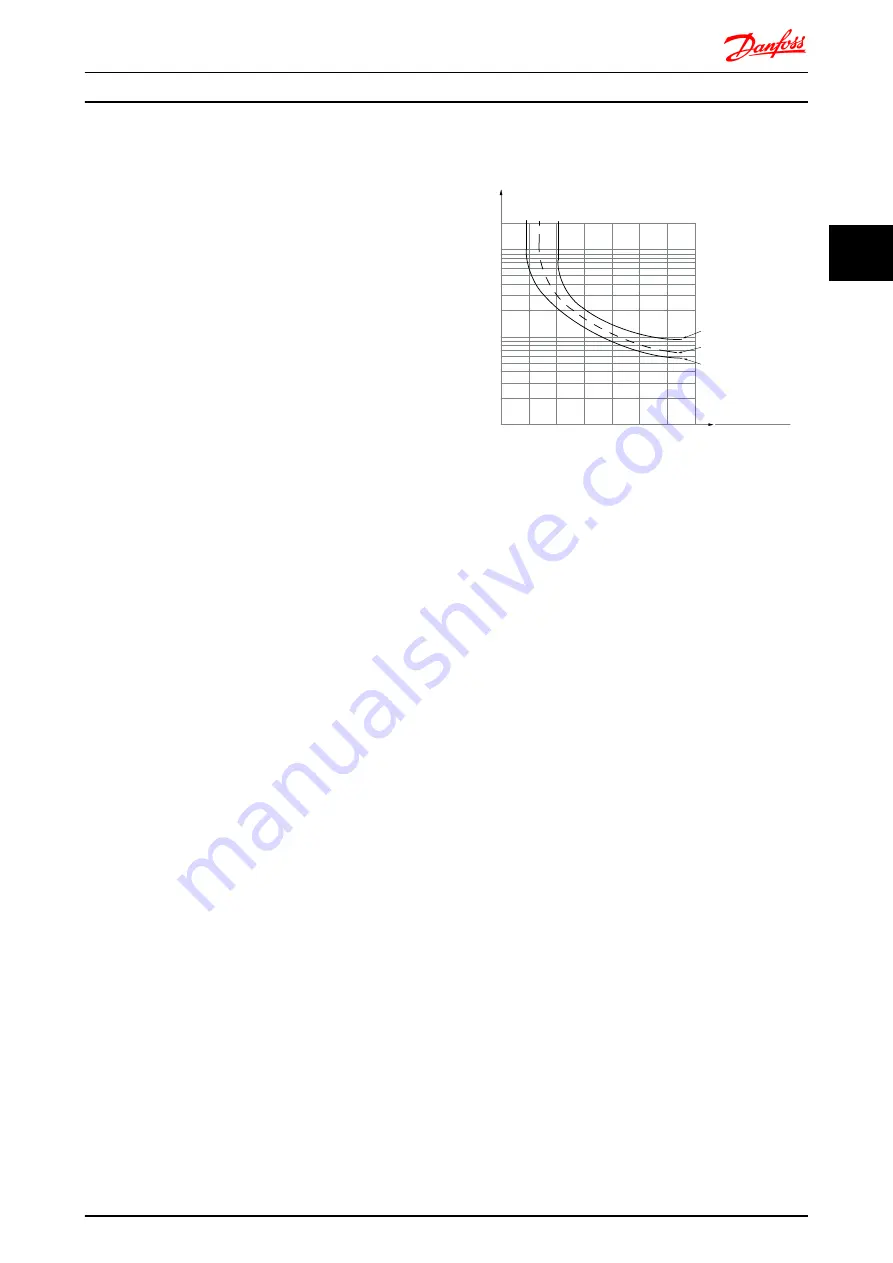
See
2-10 Brake Function
and
2-17 Over-voltage Control
to
select the method used for controlling the intermediate
circuit voltage level.
NOTE
OVC cannot be activated when running a PM motor, that
is, for parameter
1-10 Motor Construction
set to
[1] PM non
salient SPM
.
Mains Drop-out
During mains drop-out, the frequency converter keeps
running until the intermediate circuit voltage drops below
the minimum stop level. The minimum stop level is
typically 15% below the lowest rated supply voltage of the
frequency converter. The mains voltage prior to the drop-
out, combined with the motor load, determines how long
it takes for the inverter to coast.
Static Overload in VVC
plus
mode
When the frequency converter is overloaded, the controls
reduce the output frequency to reduce the load. Overload
is defined as reaching the torque limit set in
4-16 Torque
Limit Motor Mode
/
4-17 Torque Limit Generator Mode
.
For extreme overload, a current acts to ensure the
frequency converter cuts out after approximately 5-10 s.
Operation within the torque limit is limited in time (0-60 s)
in
14-25 Trip Delay at Torque Limit
.
3.3.4.1 Motor Thermal Protection
To protect the application from serious damage, the
frequency converter offers several dedicated features
Torque Limit
The torque limit feature the motor is protected for being
overloaded independent of the speed. Select torque limit
settings
4-16 Torque Limit Motor Mode
and or
4-17 Torque
Limit Generator Mode
. Set the time to trip for the torque
limit warning in
14-25 Trip Delay at Torque Limit
.
Current Limit
Set the current limit in
4-18 Current Limit
. Set the time
before the current limit warning trips in
14-24 Trip Delay at
Current Limit
.
Min Speed Limit
(
4-11 Motor Speed Low Limit [RPM]
or
4-12 Motor Speed Low
Limit [Hz]
) limit the operating speed range to for instance
between 30 and 50/60 Hz. Max Speed Limit: (
4-13 Motor
Speed High Limit [RPM]
or
4-19 Max Output Frequency
) limit
the max output speed the drive can provide.
ETR (Electronic Thermal relay)
The ETR function measures actual current, speed and time
to calculate motor temperature and protect the motor
from being overheated (Warning or trip). An external
thermistor input is also available. ETR is an electronic
feature that simulates a bimetal relay based on internal
measurements. The characteristic is shown in
1.2
1.0
1.4
30
10
20
100
60
40
50
1.8
1.6
2.0
2000
500
200
400
300
1000
600
t [s]
175ZA052.12
fOUT = 2 x f M,N
fOUT = 0.2 x f M,N
fOUT = 1 x f M,N(par. 1-23)
I
MN
(par. 1-24)
I
M
Illustration 3.11 ETR Functions
: The X-axis shows the ratio between I
motor
and I
motor
nominal. The Y-axis shows the time in seconds
before the ETR cut of and trips the drive. The curves show
the characteristic nominal speed, at twice the nominal
speed and at 0.2 x the nominal speed.
At lower speed the ETR cuts off at lower heat due to less
cooling of the motor. In that way the motor is protected
from overheating even at low speed. The ETR feature
calculates the motor temperature based on actual current
and speed. The calculated temperature is visible as a read
out parameter in
16-18 Motor Thermal
in the frequency
converter.
3.4 Drive/Options Selections
3.4.1 Control Cables and Terminals
3.4.1.1 Control Cable Routing
24 V DC external supply can be used as low-voltage supply
to the control card and any option cards installed. This
enables full operation of the LCP (including parameter
setting) without connection to mains.
System Integration
VLT
®
Decentral Drive FCD 302
MG04H102 - VLT
®
is a registered Danfoss trademark
35
3
3






























